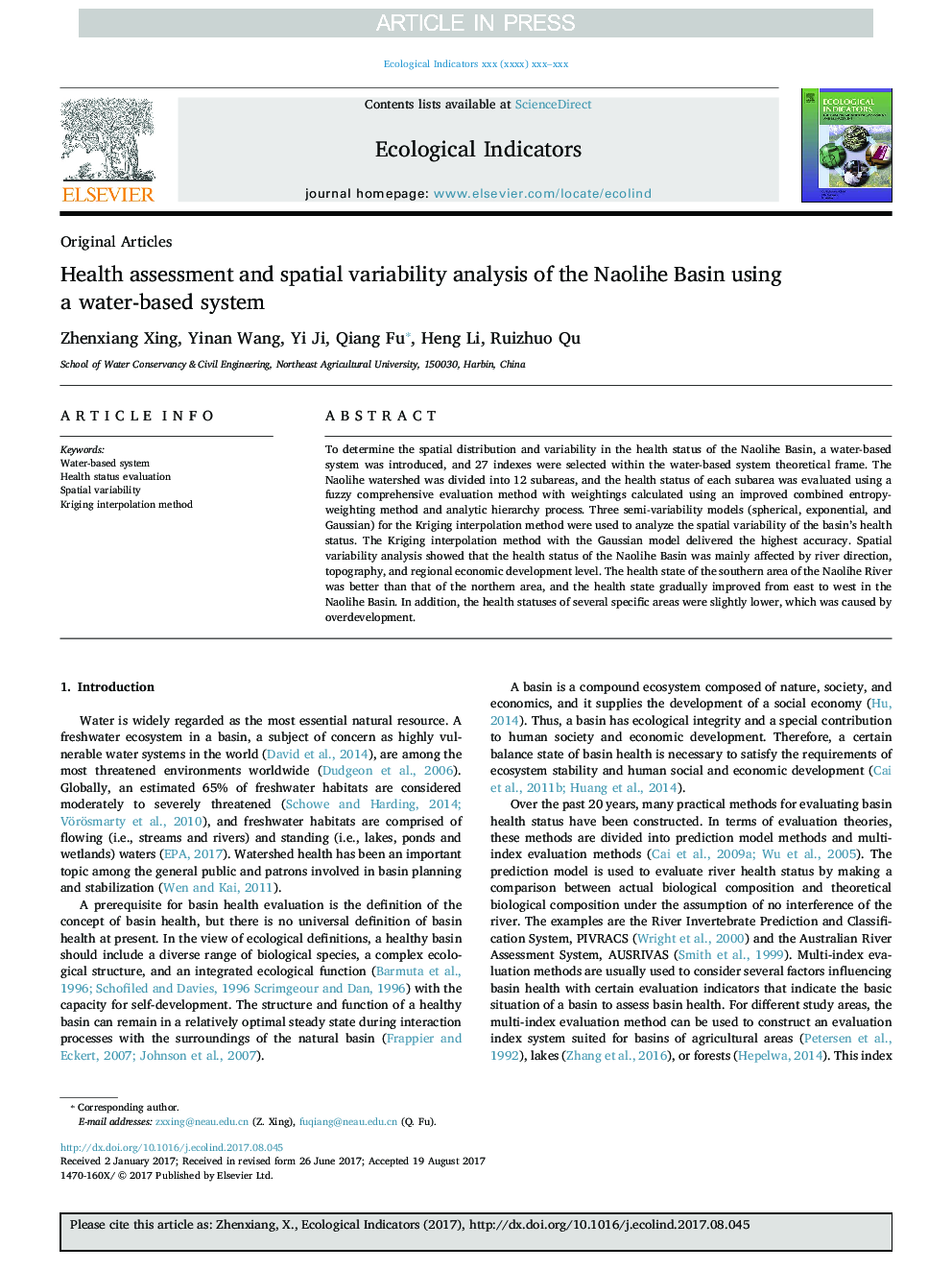| Article ID | Journal | Published Year | Pages | File Type |
|---|---|---|---|---|
| 8845241 | Ecological Indicators | 2018 | 8 Pages |
Abstract
To determine the spatial distribution and variability in the health status of the Naolihe Basin, a water-based system was introduced, and 27 indexes were selected within the water-based system theoretical frame. The Naolihe watershed was divided into 12 subareas, and the health status of each subarea was evaluated using a fuzzy comprehensive evaluation method with weightings calculated using an improved combined entropy-weighting method and analytic hierarchy process. Three semi-variability models (spherical, exponential, and Gaussian) for the Kriging interpolation method were used to analyze the spatial variability of the basin's health status. The Kriging interpolation method with the Gaussian model delivered the highest accuracy. Spatial variability analysis showed that the health status of the Naolihe Basin was mainly affected by river direction, topography, and regional economic development level. The health state of the southern area of the Naolihe River was better than that of the northern area, and the health state gradually improved from east to west in the Naolihe Basin. In addition, the health statuses of several specific areas were slightly lower, which was caused by overdevelopment.
Keywords
Related Topics
Life Sciences
Agricultural and Biological Sciences
Ecology, Evolution, Behavior and Systematics
Authors
Xing Zhenxiang, Wang Yinan, Ji Yi, Fu Qiang, Li Heng, Qu Ruizhuo,
